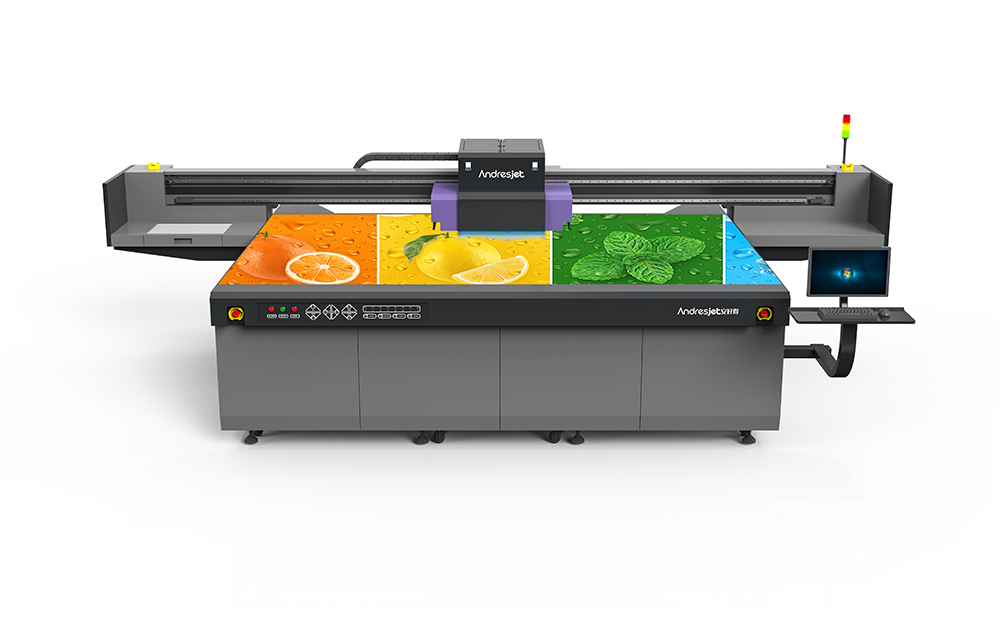How to Choose the Right Substrate for UV Flatbed Printing?
How to Choose the Right Substrate for UV Flatbed Printing?
UV flatbed printing has revolutionized the way we approach digital printing, offering unparalleled versatility and precision. This technology allows for direct printing on a wide range of materials, making it a popular choice for various industries, including advertising, signage, packaging, and even fine art reproduction. However, the success of any UV flatbed printing project heavily relies on selecting the right substrate. The substrate, or the material onto which the ink is printed, plays a crucial role in determining the final print quality, durability, and overall aesthetics of the printed piece. This article delves into the key factors to consider when choosing the right substrate for UV flatbed printing.

1. Understanding UV Flatbed Printing Technology
UV flatbed printers use ultraviolet (UV) light to instantly cure the ink as it is deposited onto the substrate. This curing process ensures that the ink dries immediately, allowing for faster production times and enabling printing on materials that would otherwise be unsuitable for traditional inkjet printing. UV inks are formulated to adhere to a broad spectrum of surfaces, from rigid plastics to flexible films, and even textiles. The key advantage of UV flatbed printing lies in its ability to produce high-resolution images with vibrant colors and sharp details, making it ideal for applications that require exceptional visual impact.
2. Key Considerations in Substrate Selection
Selecting the appropriate substrate involves evaluating several critical factors to ensure optimal print quality and performance.
2.1 Compatibility with UV Inks
Not all materials are compatible with UV inks. Some substrates may react with the ink, causing discoloration, cracking, or peeling. It is essential to choose a substrate that is specifically designed or tested for UV flatbed printing. Manufacturers often provide guides or compatibility lists indicating which materials work best with their inks and printers.
2.2 Surface Texture and Finish
The surface texture and finish of the substrate can significantly impact the print quality. Smooth surfaces generally yield sharper images and more vibrant colors, while textured surfaces may result in a more muted or diffuse appearance. Consider the desired visual effect and choose a substrate that complements it. For instance, a glossy substrate enhances color saturation, while a matte finish can provide a more subtle, elegant look.
2.3 Durability and Longevity
The intended use and environment of the printed piece dictate the required durability and longevity of the substrate. Outdoor applications, such as signage, demand substrates that can withstand exposure to sunlight, moisture, and temperature changes without fading or degrading. Indoor applications, on the other hand, may prioritize aesthetics over weather resistance.
2.4 Flexibility and Weight
The flexibility and weight of the substrate are crucial factors, especially for applications that require bending, rolling, or mounting. Rigid substrates like aluminum or acrylic are ideal for flat signs and displays, while flexible materials like vinyl or polyester are suitable for banners, wraps, and other applications that demand conformability.
2.5 Cost and Availability
Cost and availability are practical considerations that can influence the choice of substrate. While it is important to invest in a quality substrate that meets the project requirements, budget constraints and material availability can also play a role in the decision-making process.
3. Common Substrates for UV Flatbed Printing
Several materials are commonly used as substrates for UV flatbed printing. Understanding the characteristics of each can help in making an informed decision.
3.1 Acrylic
Acrylic is a popular choice for high-end signage and displays due to its transparency, durability, and resistance to weathering. It offers a sleek, modern appearance and can be easily cut, shaped, and polished for various applications.
3.2 Aluminum
Aluminum is a versatile and lightweight metal substrate that provides excellent rigidity and durability. It is commonly used for outdoor signage, vehicle wraps, and architectural applications. Aluminum can be finished in a range of colors and textures, offering design flexibility.
3.3 Vinyl
Vinyl is a flexible, cost-effective substrate that is widely used for banners, posters, and temporary signage. It is available in both matte and glossy finishes and can be easily cut and installed. Vinyl is particularly suitable for outdoor applications due to its resistance to tearing and fading.
3.4 Polycarbonate
Polycarbonate is a strong, impact-resistant material that is often used for applications requiring high durability, such as machine guards, protective covers, and outdoor signage. It offers excellent printability and can withstand harsh environments.
3.5 Textiles
Textile substrates, such as polyester and cotton blends, are ideal for applications like flags, soft signage, and interior decorations. They offer a unique tactile experience and can be easily sewn or mounted.
4. Testing and Sampling
Before committing to a specific substrate for a large-scale project, it is advisable to conduct tests or request samples from the printer. This allows for evaluating the print quality, color accuracy, and ink adhesion on the chosen material. Testing also helps identify any potential issues, such as ink bleeding or substrate warping, which can be addressed before proceeding with the full production.
Conclusion
Choosing the right substrate for UV flatbed printing is a critical step that directly impacts the success of the project. By considering factors such as compatibility with UV inks, surface texture, durability, flexibility, cost, and availability, one can make an informed decision that aligns with the specific requirements and goals of the project. Additionally, testing and sampling provide valuable insights into how the chosen substrate will perform in practice, ensuring that the final printed piece meets the desired standards of quality and aesthetics. With the wide array of substrates available, there is always a perfect match for every UV flatbed printing application.
